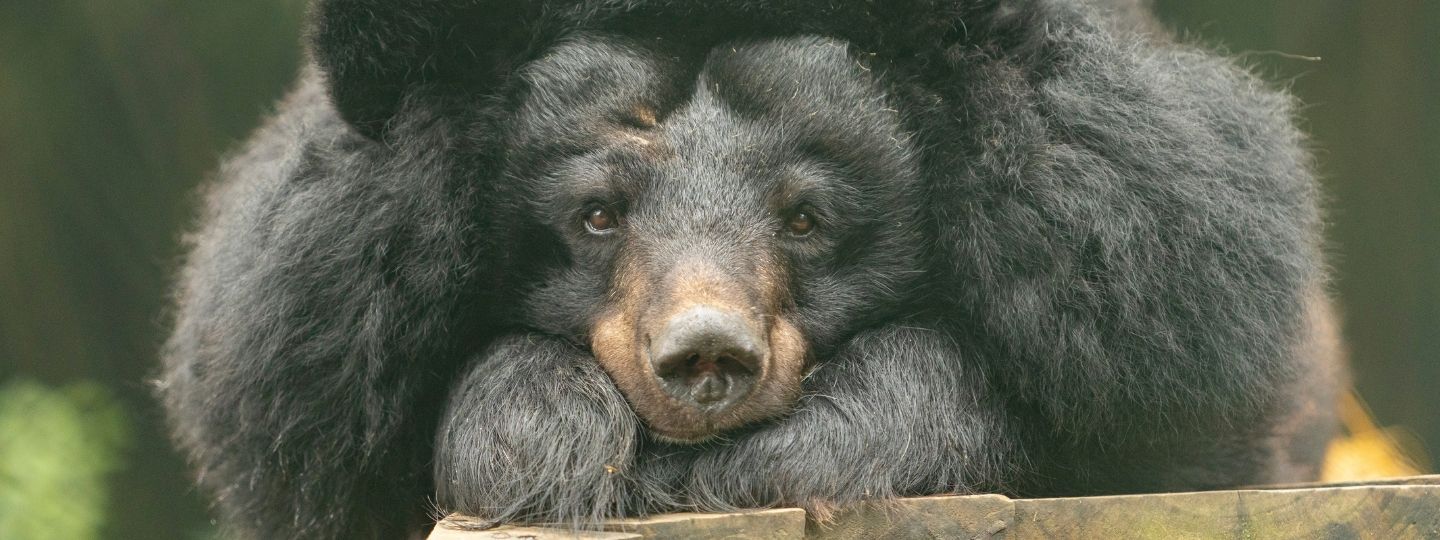
Healing trauma in bears
When a bear is rescued, their journey is just beginning. Years of isolation and cruelty leave deep emotional scars. Many arrive withdrawn, fearful, or stuck in repetitive behaviours – signs of trauma from a life lived in pain and confinement.
At Animals Asia, we meet each bear with patience and compassion. This page explores how trauma affects rescued bears, and how gentle, trust-based care helps them take their first steps toward healing.
Why and how is trauma presented in bears?
Most of the bears we rescue have endured years of psychological and physical trauma. Trapped in tiny cages and subjected to painful bile extraction, they’ve lived in constant fear, isolation and pain.
After rescue, many struggle with social interactions, show extreme fear responses, or repeat the same behaviours over and over again. These are all signs of trauma. But trauma doesn’t have to define them, and it doesn’t have to be the end of their story.
Recovery isn’t a straight line
Every bear is different. Their journey to healing depends on their individual history, personality, and level of resilience. While some begin to relax within weeks, others take years to trust again. Setbacks are normal and part of a process that can be lifelong.
At Animals Asia’s sanctuaries, we celebrate progress, no matter how small. A bear stepping outside for the first time, playing with a new friend, splashing in a pool. Each moment is a triumph of hope over harm.
Building trust, step by step
Many bears arrive terrified of humans. So we work gently and consistently to show them they’re safe with us.
Our caregivers build positive relationships by respecting each bear’s boundaries, offering treats, and keeping interactions calm and predictable.
It takes time to build trust, but once it’s established the bears can relax, explore, learn, and connect.
Creating safe, soothing spaces
To support recovery, we modify each bear’s environment to reduce stress. This might mean providing quiet areas, blocking certain sights or sounds, or adjusting routines.
Triggers can be hard to predict. A sudden movement or unfamiliar smell might trigger a fear response. So we go slowly, observing carefully and responding with empathy. In some cases, we use medication alongside behaviour work to help the most deeply traumatised bears.
Teaching new ways to cope
Through patient training and enrichment, we help bears replace fear-based behaviours with healthier ones. We use positive reinforcement, like treats and praise, to encourage behaviours that support wellbeing.
Techniques like desensitisation and counter-conditioning help them re-learn that once-scary situations are now safe. Every session is tailored to each bear’s emotional needs and paced to suit their comfort.
Slow and steady wins the race
Even years after rescue, bears can be sensitive to change. A new enclosure, a new bear arrival, even a change in routine can be overwhelming. That’s why we take things slowly, always letting the bear lead the pace.
With time, consistency, and compassion, many of our bears start to thrive. They start to explore, make friends, and play. And they experience joy, often for the first time in their lives.
